The Disneyland Resort announced last week that it would add a pedestrian bridge to its new parking structure, to make it easier for more visitors to walk between their cars and the theme parks. With two parks, three hotels, and a shopping district on a compact 500 acres, the Disneyland Resort already is one of the more walkable multi-gate theme park resorts in the world. But it is the best?
By my count, there are eight multi-gate theme park resorts in the world now. I am not counting water parks here — just resorts that include two or more separately gated theme parks on the same property. The world's first multi-gate resort remains its largest — the Walt Disney World Resort in Florida, with four theme parks, two water parks and dozens of hotels across nearly 25,000 acres.
Asking people to rank the world's theme park resorts leads to endless debate. (Which is great!) But for today's post, I am limiting the discussion to one criterion — walkability. How easy is it to ditch your car — and even the resort's provided transportation — and navigate everything the resort has to offer, exclusively on foot?
Compact design is essential for walkability. Huge surface parking lots, water elements, massive wooded or landscaped easements, and sprawling facility designs can leave destinations positioned so far apart that cars, buses, and other transportation systems become necessary to get from any point to another in a resort that will include multiple theme parks, hotels, and other attractions. But a compact design by itself does not create a walkable experience. Designers must provide convenient walkways to connect points within the resort, considering both the environment and grading to ensure that walking becomes an attractive alternative to mechanical transportation.
Why does this matter? Because walking is the cheapest and greenest way to people from one point to another. Walkability has become the Holy Grail for urban planners around the world, as communities look for ways to free themselves from the pollution and expense of car-centric design. Theme parks can be master classes in urban planning, with the opportunity to create ideal communities from scratch. Designing a community of tomorrow was the inspiration for Walt Disney World, after all. So how well are today's theme park resorts doing in creating walkable communities?
I have had the good fortune to visit seven of the world's eight multi-gate theme park resorts. So here is my ranking, from most walkable to least.
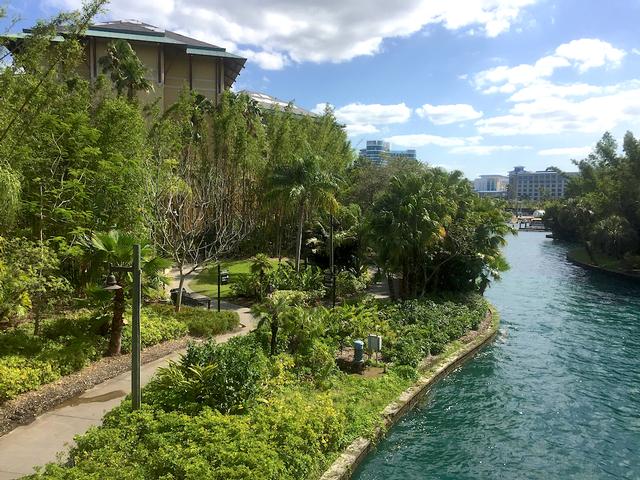
1. Universal Orlando Resort — Universal wins my top spot for creating a dense, walkable site plan that nevertheless feels more like a natural resort than a urban city center. Universal Orlando's Garden Walk is an attraction unto itself, a beautifully landscape pathway that connects the resort's two theme parks, CityWalk shopping district, and five of its six hotels. (The sixth, the new Aventura, is just steps away from the Garden Walk.) Universal even managed to include a water element within the resort without sacrificing its walkability. The water taxi canal also provides a relaxing and atypical alternative to walking, should you decide to ride back from the parks to a hotel.
My only knock against Universal is that it does not connect well with the surrounding community. Given the unwalkable suburban sprawl that defines almost all of the Orlando area, however, there's not really a walkable surrounding community to connect with here, anyway.
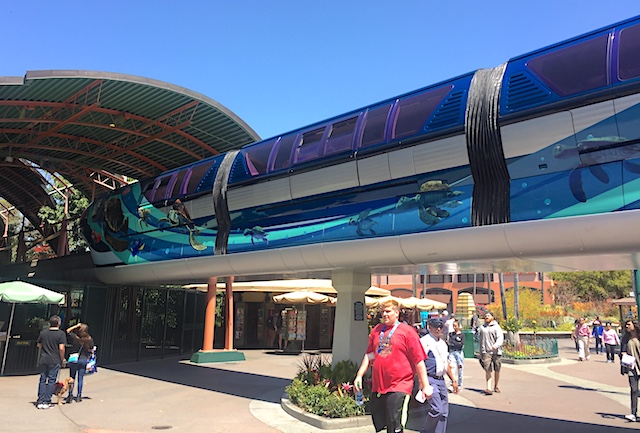
2. Disneyland Resort — On the other hand, California's Disneyland blends relatively well into urban grid of surrounding Anaheim, as least on its Harbor Boulevard side. But Disneyland drops to second on my list as the remoteness of its parking areas dissuades many from walking. Surface parking lots also separate the Paradise Pier Hotel from Downtown Disney, leaving the southwestern chunk of the resort feeling like an afterthought. Disney has done very well with its original theme park, but it's clear that this is not a resort that was planned from scratch to be walkable and efficient, but one that was shoe-horned into whatever spaces Disney had to work with over the years. Frankly, I am amazed sometimes that this resort is as charming outside the parks as it is.
Now there's a bit of a drop to third place.
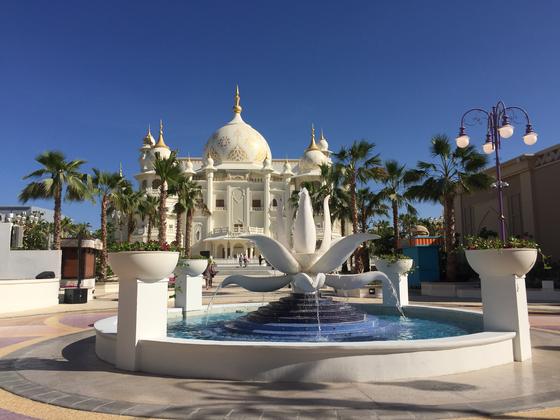
3. Dubai Parks & Resorts — For three or four months of the year, Dubai Parks & Resorts is a perfect walkable resort, with three theme parks positioned at the vertices of its Riverland shopping district and the tropical-themed Lapita Hotel along one edge. So if you're visiting between November and February, enjoy!
What if you're visiting the other months of the year? Well, then, the United Arab Emirates' desert heat makes this outdoor resort a brutal environment in which to walk. That's likely a large part of the reason why this resort has struggled since its late 2016 opening, only this year passing three million annual visitors. It's a seasonal resort in a year-round resort's body.
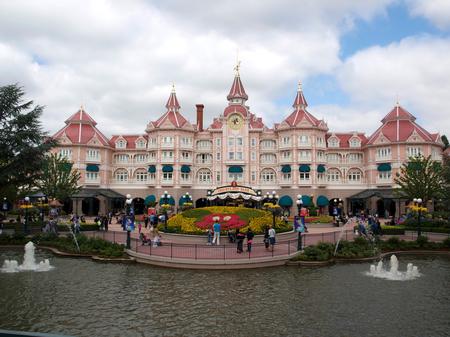
4. Disneyland Paris — If you are taking the TGV or RER trains from points beyond in the Paris area, Disneyland Paris could not be more convenient. The train station lies in the middle of the Disney Village plaza connecting Disneyland Paris and Walt Disney Studios Park. But those big rail lines bisecting the resort create an issue for guests staying on site. Disney's Hotel New York, Sequoia Lodge, and Newport Bay Club are close enough along the Lake Buena Vista walkway, and the Disneyland Hotel is Disney's most convenient anywhere, built atop Main Street itself. But the Cheyenne and Santa Fe are a bit of a hike, isolated by a massive surface parking lot. And Val d'Europe is strictly a bus, car, or train ride away.
Now, another big jump to number five.
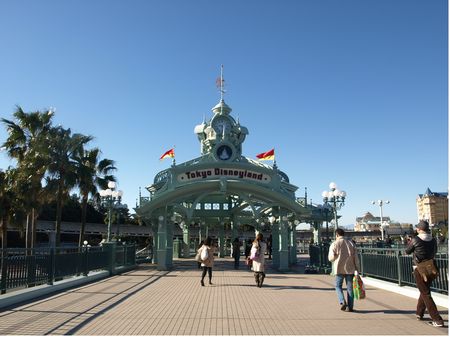
5. Tokyo Disney Resort — Imagine if California's Disneyland did not place its two parks' entrances facing one another, but instead placed them back-to-back, with back-of-house facilities in between, and their entrances on opposite sides of the resort. That's Tokyo Disney. The resort itself is relatively compact, built on an amazing site on the edge of Tokyo Bay. But the site plan is horrendous, with surface parking lots separating the parks from most of the hotels, necessitating the use of the resort's (paid, not free) monorail system to get around.
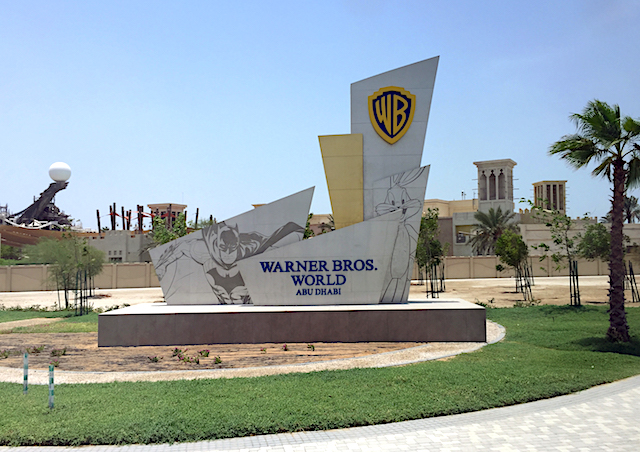
6. Yas Island — If Dubai Parks & Resorts is designed for the winter months, Yas Island is designed for the rest of the year and the UAE's typical heat and humidity. With two indoor theme parks — Ferrari World and Warner Bros. World — and a huge indoor shopping mall, Abu Dhabi's biggest resort is designed to get you out of the elements, rather than enabling you to walk around in them. Yet the resort's attractions are all located within what would be easy walking distance, if only anyone had designed a way for you to do that. Heck, the resort's hotel plaza lies within a couple of miles of the new Abu Dhabi International Airport terminal, now under construction. If there were a walkway and it weren't 115F outside for much of the year, you could walk from your hotel here to the airport in less time that it usually takes Disney's Magical Express to get me from a Disney World hotel to MCO.
But there isn't, and it is, so cars, Ubers, and shuttle buses it is on Yas Island. Given that the resort's two most popular attractions are a Formula 1 race track and a shrine to the world's most famous automobile brand, I suppose that valuing walking over driving would break the theme here. But ultimately, it's the heat and humidity for most of the year that makes walking around Yas Island less than ideal.
And now, let's board the Tower of Terror for the big drop.
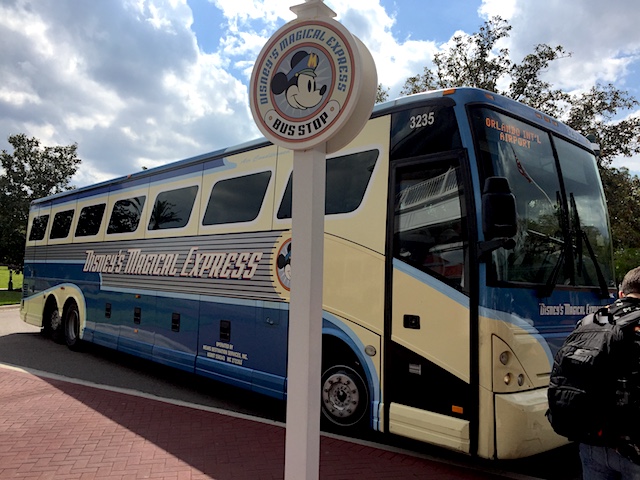
7. Walt Disney World Resort — At 50 times the size of Disneyland, there's no practical way to make Disney World a walkable destination. The only people who visit all four parks on foot are runners in the annual Walt Disney World Marathon. And yet... the Boardwalk area within the resort is a walkable resort-within-the-resort, with two theme parks (Epcot and Disney's Hollywood Studios) and several hotels connected by a nice walking path, as well as a boat system. (Well, when the whole thing isn't down due to skyway construction, anyway.) That would place this scaled-down WDW farther up this list, if it weren't for all those other far-flung destinations around the resort dragging it back to the bottom.
Disney World is a product of another era in design — a modernist time when walking to get around was discounted as a relic of the previous era. That's the trouble with designing for tomorrow. Because eventually, it becomes yesterday.
Not rated: PortAventura World — With the recent opening of its Ferrari Land park, PortAventura has expanded to a multi-gate resort, but I haven't been there yet, so I could not include it in my ranking. But from the looks of it (from Google Maps, at least), this appears to be a compact destination that's easily walkable, though that appears to be as much due to a relative lack of attractions as efficient design. I'd love to hear from visitors' thoughts on this one.
 Like posts such as this one? Support Theme Park Insider with a one-time or monthly donation. Thank you!
Like posts such as this one? Support Theme Park Insider with a one-time or monthly donation. Thank you!I have to agree with Universal Orlando. My family are not huge on theme parks but will stay on property any day. The walks to the park are very tranquil & everything is very close by leaving less stress. Couldn't believe the short walk to Volcano Bay from Cabana Bay. I don't ever see me forking up money for WDW resort unless it's for the more expensive ones, everything seems far away from each other still.
My family has often stayed at the Dolphin for WDW visits so we're used to walking for Epcot and it works out well. Obviously, the size cuts down on it so was amazed when going to Disneyland how easily you can walk from park to park.
Likewise, at Universal Orlando, we were at Hard Rock Hotel and very good to be able to walk to each park and that worked out fine. I guess it just means the size issues are different as WDW was meant to be bigger from the start and it was later parks that took the idea of more walking into consideration.
If I could afford the deluxe hotels at WDW, walkability would be a key determining factor in which to choose. The convenience of being able to walk to the Magic Kingdom from the Contemporary is a big consideration, as is being able to walk to the Ticket and Transportation Center and get the monorail to Epcot from the Polynesian. I've always found that the biggest headache I've had staying on Disney property is relying on buses to and from attractions that are often overcrowded and too noisy for my taste, and if I can eliminate for at least half the parks, that's a big benefit to me. Which is why I plan to do like MikeW and stay at the Swan or Dolphin next time if I am on property to be able to walk to Epcot and DHS, plus some of the reputed best places to east in Disney along the Boardwalk.
Love the walk at Universal Orlando resorts. So peaceful whether you walk it or take a water taxi. WDW resorts leave a lot to be desired. Stayed at the Dolphin once for a work training and enjoyed the closeness of the Boardwalk Epcot and Hollywood Studios.
I know Ferrari Land does technically make the cut as a theme park, but in reality it's a nicely designed *land* that they've stuck a separate gate on. I do wonder if we'll see more parks try this strategy in the years to come.
Anyway, PA deserves its place at the bottom of the list. Sure, every hotel is within easy walking distance of the parks, but there's nothing on resort to do after park closing - you're expected to either stay in your hotel complex or get transportation to nearby Salou. There is no good out-of-hours walking route, even if you wish to visit a different hotel - expect to navigate dark pathways and service roads.
Personally, I'd place DLP higher. I think they've done a nice job landscaping the walk from the further-out hotels, which are no more than a 20 min walk to the gates. Certainly less than whatever the Portofino-IoA walk is. And you can get from the parks to Val D'Europe in a pleasant, well-lit 30 minutes, which is useful for nights you want to stay out later than Disney Village offers - or if those crazy "official" hotel prices are out of reach. (It's not so well sign posted, admittedly, but then it's also not really considered part of the resort.)
I’ve been to WDW 5 times, Disneyland Paris a couple of times, and PortAventura 4 times. Out of all of them, especially if staying at the PortAventura Hotel, this is definitely the most walkable. In fact, depending on where your room is based, you can be as close to the PortAventura park as the Disneyland Hotel at DLP. The park is as beautiful as any Disney park as is good for a full week, making it far easier for Europeans to get to than the American parks. However, FerrariLand is poor - worse than the Studios at DLP have ever been. Whilst some of the theming is good, the lack of attractions (despite some top quality ones) causes massive queues all day long. At least it is a short walk back to the hotel or other park!
Universal Orlando is number 1 for now but according to your criteria when the new gate gets open it will no longer be walkable.
I brought that issue up in an earlier post, Universal Orlando and the irony of 'more'.
But I just realized I did something tricky in defining a "theme park resort" for this post - "resorts that include two or more separately gated theme parks on the same property." The fourth gate at Universal Orlando will be on a remote property, so does it count as part of the resort under that definition? More fodder for future posts, I guess.
One thing you didn't factor into the walkability of Universal Orlando versus the Disneyland Resort is the weather. Taking into the context (or environment) in which each park exists, there are FAR fewer days that one would want to be dealing with extra walking not done inside the parks at USO. The heat and humidity, and all the intense rain/lightning days are big factors affecting any theme park in Orlando whereas SoCal has comparatively much more tolerable (and thus walkable) conditions.
Staying at any of the Alton Towers hotels, and then walking to the park is a nice way to spend 15-20 mins. And then walking around the AT gardens, once in there, is a must do also. I hiked all the way round the outside of the park last year, and it's really interesting to see the old original gardens and the associated ruined stonework, that once made up part of the stately home.
Comparing multi-gate theme park destination resorts to single-gate theme parks with on-site hotels is definitely an "apples vs oranges" kind of exercise.
Perhaps we should have a different list of most walkable single-gate theme park resorts? Shanghai Disneyland, Hong Kong Disneyland, Alton Towers, Efteling, Chessington World of Adventures, Thorpe Park, Liseberg, Efteling, Gardaland, Hersheypark, Cedar Point, Universal Studios Hollywood, Universal Studios Japan, Universal Studios Singapore, Drayton Manor, Parc Asterx and virtually every LEGOLAND worldwide all qualify and soon, Ocean Park in Hong Kong will become a theme park destination resort- and that's just what I can think up off the top of my head. Should be interesting, especially since these venues are intended as short break destinations.
This article has been archived and is no longer accepting comments.
Nailed it. Universal Orlando Resort is near perfect layout. You can walk anywhere and change parks or go to Citywalk easily. Staying at Hard Rock, Royal Pacific, or Portofino makes for a very relaxing trip. Exact opposite of Disneyworld which requires a full logistics team and making decisions months in advance to enjoy your trip.